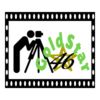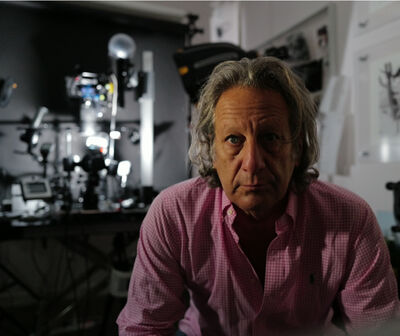Red Sun turns Yellow-white in Lightroom
Jun 8, 2021 06:37:19 #
bioteacher
Loc: Brooklyn, NY
I shoot with a Canon 6D Mark II or 80D and like to take sunset pictures. The sun appears to be bright red, but when I download the pictures the sun is yellow-white. I am shooting in RAW (CR2) and under exposing the shots. Any suggestions/help would be appreciated.
Jun 8, 2021 06:56:39 #
Jun 8, 2021 06:57:58 #
I think you are still over exposing the sun...
Try bracketing with still more under exposure.
Try bracketing with still more under exposure.
Jun 8, 2021 06:59:56 #
Jun 8, 2021 07:06:13 #
Ensure you're highlight priority is turned on. That way it will give you a warning when the highlights are too blown out.
Jun 8, 2021 07:20:47 #
Why are you underexposing?
--Bob
--Bob
bioteacher wrote:
I shoot with a Canon 6D Mark II or 80D and like to take sunset pictures. The sun appears to be bright red, but when I download the pictures the sun is yellow-white. I am shooting in RAW (CR2) and under exposing the shots. Any suggestions/help would be appreciated.
Jun 8, 2021 07:23:36 #
bioteacher wrote:
I shoot with a Canon 6D Mark II or 80D and like to take sunset pictures. The sun appears to be bright red, but when I download the pictures the sun is yellow-white. I am shooting in RAW (CR2) and under exposing the shots. Any suggestions/help would be appreciated.
======
Bio-Teacher...
One of the misconceptions about digital photography is - if you can see with your human eyes, you can photograph it. I know that's a strange concept but, not always true ~~ let me explain.
In the real world, the human eye is able to see anywhere between 22 to 24 EVs of light. At the absolute best, today's modern digital cameras cannot record over 16 EV's of light and most likely is anywhere between 12 to 15 EV's of light.
The phenomenon to which I'm talking about above is known as the "Dynamic Range" capability of the sensor of your camera.
In order to compensate for this, you do one of two things. You either shoot several images starting with exposure for the high-value and ending with the exposure of the low value and you can "Composit" them together called high dynamic range photographs or HDR
The second would be, exposed intentionally for the highlights, that is proper exposure of the sunlight and then developed for the Shadows.
Both of the above techniques take highly-skilled approaches and I will not try to explain in detail both of them here but, I would suggest that you go to YouTube, do some searching on both subjects and get a better understanding of the techniques that are being talked about...
Although one of the two above techniques may work in many instances - sometimes, there are times when the brightness of the sun will overcome by the capability of the digital sensor. There are times when brightness in a scene such as the sun, Reflections on Chrome, or Reflections on water, will totally overpower the capability of your sensor and you'll never ever be able to recover all of the detail in those highlights.
Cheers
George Veazey
#######
Jun 8, 2021 07:28:09 #
The sun will be white in photographs made with normal cameras. You can reduced the effect of blown white by making the sun smaller in your composition.
Any color you see is caused by clouds or particulates in the air. You can underexpose to make those colors more saturated, but you may still see a white center, depending on the thickness of clouds, smoke, haze etc. The reason has already been explained by George Veazey.
Post a photo with "store original" clicked and let us see what you've done. Also, do a Google Image search and carefully examine all the sunset photos. You'll see what I mean
Any color you see is caused by clouds or particulates in the air. You can underexpose to make those colors more saturated, but you may still see a white center, depending on the thickness of clouds, smoke, haze etc. The reason has already been explained by George Veazey.
Post a photo with "store original" clicked and let us see what you've done. Also, do a Google Image search and carefully examine all the sunset photos. You'll see what I mean

Jun 8, 2021 07:40:56 #
Currently involved in a bracketing/HDR project, to teach myself how to handle high dynamic range.
Jun 8, 2021 07:49:12 #
There's lots of possible causes. However, since you have not provided an actual image, the best any of us can do is guess.
What camera mode are you using (P / A / T / M)?
What WB mode are you using?
What metering mode are you using?
What ISO setting are you using, AUTO-ISO or always something specific?
These four camera setting questions will deliver wildly different responses to a sunrise / sunset situation. Shooting in RAW with an advanced editor will allow you to adjust both the K temp and tint to create most any result desired, almost without regard for what the camera decided to capture. You can split-tone too, changing (swapping) individual colors.
What have you done in LR with the import? If you AUTO-TONE or just AUTO-WB inside LR, Adobe will 'zig' from whatever 'zag' decisions the camera made. Both are thinking the WB 'temp' should be closer to about 5200K (daylight) when you probably want something very 'warm' in the 7000K area.
Take control of the situation, both in the camera and especially in LR. If you want some ideas on how to capture and edit in LR, the best method is to give an original JPEG, either from your RAW+JPEG capture or using DPPv4 to spit out a quick JPEG. The goal is to get the original EXIF that Adobe suppresses, but DPP keeps in creating the JPEG. The JPEG is the method to share an example to stay under the 20MB attachment limitation of this site.
What camera mode are you using (P / A / T / M)?
What WB mode are you using?
What metering mode are you using?
What ISO setting are you using, AUTO-ISO or always something specific?
These four camera setting questions will deliver wildly different responses to a sunrise / sunset situation. Shooting in RAW with an advanced editor will allow you to adjust both the K temp and tint to create most any result desired, almost without regard for what the camera decided to capture. You can split-tone too, changing (swapping) individual colors.
What have you done in LR with the import? If you AUTO-TONE or just AUTO-WB inside LR, Adobe will 'zig' from whatever 'zag' decisions the camera made. Both are thinking the WB 'temp' should be closer to about 5200K (daylight) when you probably want something very 'warm' in the 7000K area.
Take control of the situation, both in the camera and especially in LR. If you want some ideas on how to capture and edit in LR, the best method is to give an original JPEG, either from your RAW+JPEG capture or using DPPv4 to spit out a quick JPEG. The goal is to get the original EXIF that Adobe suppresses, but DPP keeps in creating the JPEG. The JPEG is the method to share an example to stay under the 20MB attachment limitation of this site.
Jun 8, 2021 07:52:12 #
No one has asked whether the sun looked red on the review screen. The title blames LR for changing the image. There’s not enough data provided to even begin addressing the issue.
Jun 8, 2021 08:13:31 #
Jun 9, 2021 06:48:06 #
I think it is a simple equation. Make sure that you have not blown out the sun, then adjust your temperature in Lightroom. Dynamic range may become an issue as when you increase your shutter speed to get the proper exposure of the sun, the rest of the image may be under exposed. You may have to take multiple images at different exposures to capture all correctly. You must act quickly as the sun sets very fast when on the horizon and you will want to capture them in rapid succession to all sun locations appear to be the same position.
Jun 9, 2021 14:56:29 #
What I have done in astrophotography can be done here, too.
1. Shoot one photo to make sure to get the full colors and brightness of the clouds/sky/
2. Shoot a second photo way underexposing (or exposing centered on the Sun) so that the Sun is colored as it is.
3. In postprocessing, cut the sky/clouds from the first one and paste on top of the second one replacing all of the dark stuff so that only the Sun survives from the second shot.
While it may seem unbecoming to a professional photographer, this is where I use MS Paint in Windows. By default, white is the transparent color if one turns this on in the selection menu. So, in the first photo, I would cover the bright sun with a circle of complete white, copy the whole photo, and paste it over the second photo opened in another instance of MS Paint where I have turned on the transparent option. Some trial-and-error may need to be done with how large to make the white circle, but MS Paint is perfect for this. I do not know what LightRoom will do since I do not have nor use it. --Richard
1. Shoot one photo to make sure to get the full colors and brightness of the clouds/sky/
2. Shoot a second photo way underexposing (or exposing centered on the Sun) so that the Sun is colored as it is.
3. In postprocessing, cut the sky/clouds from the first one and paste on top of the second one replacing all of the dark stuff so that only the Sun survives from the second shot.
While it may seem unbecoming to a professional photographer, this is where I use MS Paint in Windows. By default, white is the transparent color if one turns this on in the selection menu. So, in the first photo, I would cover the bright sun with a circle of complete white, copy the whole photo, and paste it over the second photo opened in another instance of MS Paint where I have turned on the transparent option. Some trial-and-error may need to be done with how large to make the white circle, but MS Paint is perfect for this. I do not know what LightRoom will do since I do not have nor use it. --Richard
Jun 9, 2021 18:58:04 #
amfoto1
Loc: San Jose, Calif. USA
bioteacher wrote:
I shoot with a Canon 6D Mark II or 80D and like to take sunset pictures. The sun appears to be bright red, but when I download the pictures the sun is yellow-white. I am shooting in RAW (CR2) and under exposing the shots. Any suggestions/help would be appreciated.
The sun is extremely bright compared to everything else, even when it's setting and near the horizon. It's typical that a camera will try to strike a balance exposing the scene, which will significantly overexpose the sun and likely underexpose everything else.
In this case, the sun was behind some clouds (no solar "disk" to be seen), which "helped" balance the exposure a little...

It's hard to show online in Internet sizes and resolutions, but there is good detail even in the deepest shadows of the above image.
What you might try is setting up bracketed exposures and the camera to its highest shooting speed. Set the brackets as 0, -1.33 or -1.5 stops and -3 stops. Then take a burst of three shot. Hold the camera as steady as possible or use a tripod. It would probably be best to use aperture priority auto exposure (Av) or use manual (M) with Auto ISO. This way the aperture won't change, causing a difference in depth of field from one image to the next. In the first case, the shutter speed would change (just be sure it doesn't get too slow... raise the ISO if it does). In the second case you would select both the shutter speed and the aperture, then the camera would change the ISO from shot to shot for the bracketing (watch that ISO doesn't get so high you have too much "noise" in your images... but that shouldn't be a problem shooting directly into the sun).
Later in post-processing the images, you should have one shot that exposes most of the scene and choice of two others that do a better job with just the sun, but make everything else too dark. Simply copy the sun you like from one of those two images and paste it into the first image.
You may have to experiment with the exposure settings and how much increment you need between the bracketed shots. Some cameras can do more than three bracketed shots, if wanted. I don't know if that's the case with 6D or 80D.
If you want to reply, then register here. Registration is free and your account is created instantly, so you can post right away.








